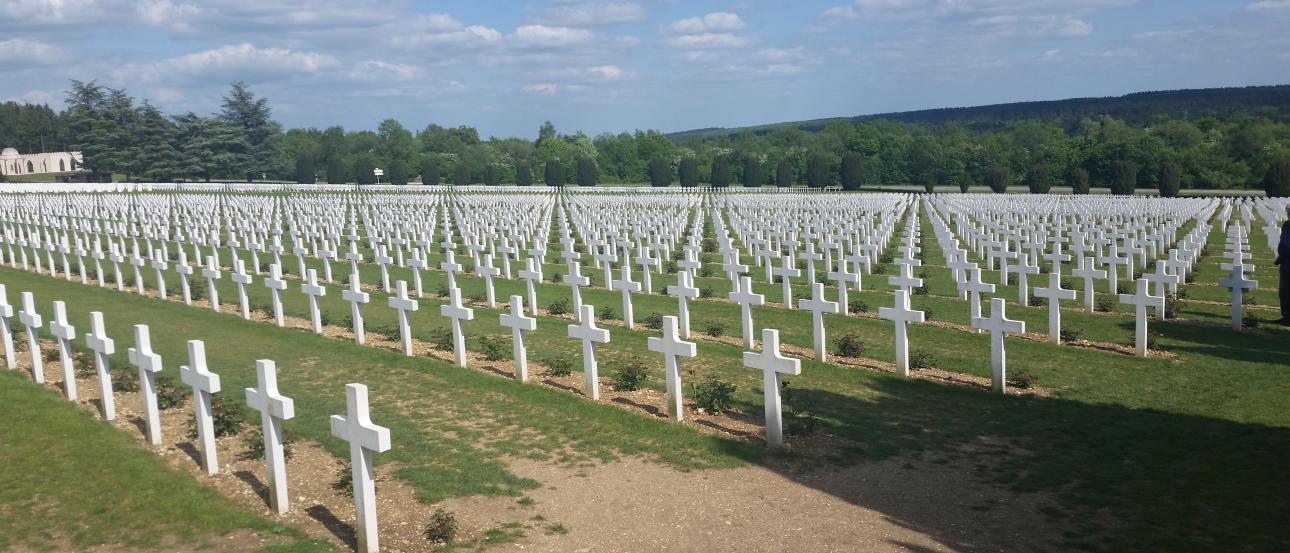20,000 British soldiers died in the first day of the Battle of the Somme. The battle would go on to last from July 1st until November 18th and at the end, over 1,000,000 men were wounded or had lost their lives fighting over less than 10 km of ground. Going to the locations I had written about in previous papers was a sobering experience. On the way from my parent’s house to the Somme, we stopped by Verdun, where a similarly horrific battle had taken place. One of the locations we visited was the Douaumont Ossuary – a building where they store bones of the dead - through the windows, we could see the skulls of men who fought in World War I staring back at us. Both battlefields were located in the beautiful French countryside, the rolling hills alternating between the yellow flowers of rapeseed, the waving wheat and the furrows of fields awaiting their next crop. One might the area to get away from the stresses of normal life and escape to relax for a weekend. However, the idyllic landscape was not all it seemed. Spotting the horizon were hundreds of memorials and graveyards, some with commanding views at the tops of hills that could be seen for kilometers away and some that were just an understated cross in front of the village church. The graveyards, holding anywhere from dozens to thousands of men, the majority of whose crosses read simply “Known only to God,” had pristinely manicured lawns and fresh flowers growing at the head of every grave. They could not show the hellish mud that every man at the Somme had to slog through, the fear in every man’s eyes who ran towards No Man’s Land, or the crippling psychological effects that every man suffered with shells raining on their heads day and night. Only one memorial left the trenches relatively untouched. There, it was possible to see the deep trenches and the pockmarked land that remains even today. At a museum about the battle, a sign informed visitors that over 100,000 pounds of metal is pulled from the ground every year in the area and that it will take 700 years to fully remove all of the metal. Although the last veteran of the war died 6 years ago, the area will remember the war for hundreds of years to come. While farmers may have evened out most of the craters caused by the artillery and reestablished a sense of normalcy through the yearly harvest, the remaining memorials and graves ensure that no one in the area will forget the tragedy that took place, and even today towns still hang the flags of their liberators on businesses and bus stops, despite the fact that the current citizens are three generations separated from their forefathers who heralded the coming of the French and British troops.

Robin Clower
<p>I am Robin Clower and currently I'm earning degrees in Secondary Education: Mathematics and German, as well as an additional major in Mathematics at Oklahoma State University (Go Cowboys!) I lived in Germany as a child, but am now headed back after studying Germany's language, culture, and history for four years at OSU. My main passion in life is teaching, so I hope to teach y'all something while I'm in Germany and learning about myself.</p>







